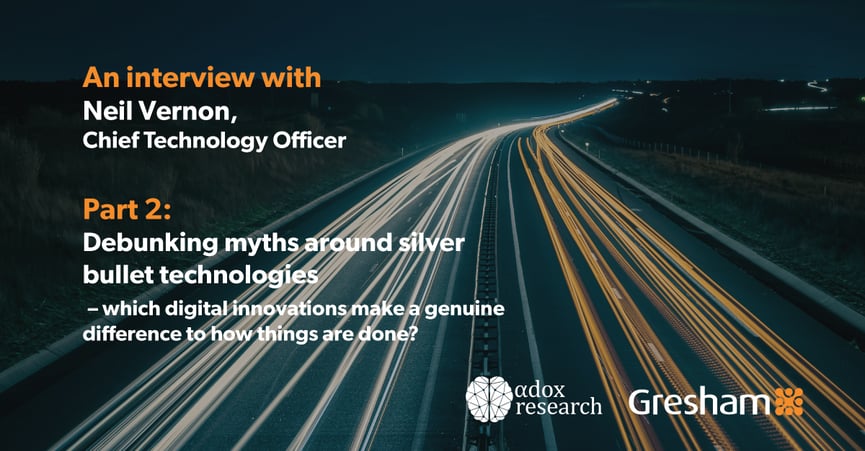Part 2: Debunking myths around silver bullet technologies
A powerful reconciliation and control platform is useless if it can't handle any data in any format, from anywhere across your organisation. So how do you ensure that it can?
Our three stages of data control podcast series sees Neil Vernon, Gresham’s CTO in conversation with Gert Raeves, Adox Research. Neil talks us through the three stages of data control: from the static and fixed reconciliation engines of old to under-delivering offshored centres-of-excellence, and ending with current state-of-the-art flexible and end user-focused reconciliation solutions which support highly the highly automated reconciliation processes that a modern business needs.
Listen to 'The Three Stages of Data Control: Part Two' below
Neil explains how the stress test of post-pandemic market volatility shows the limitations of AI in reconciliations and data control and how the ability for robots to learn from human experts, with robotic process automation, provides unique value.
"When the markets went crazy in March 2020, the humans in the banks already knew how they would respond to the errors and the volumes they would inevitably find in their reconciliation and control functions - because they understood the processes upstream.
One of our large customers on March 13 was dealing with 600,000 errors (typically they have 5,000 per day) but they already knew what the resolution path for those errors would look like because they understood the processes - humans are invaluable for those situations.
When you have one of those awful days, humans are going to solve it - it won't be AI..."
Why should business users care how data control is done? Neil looks into the obvious and hidden costs of processing the data that underpins daily operations, decision making and passing compliance. Talking through what technologies create 'wow' factor breakthroughs, Neil outlines why Gresham's Clareti platform has been built the way it has been, what technologies can only get you so far and the importance of humans in an increasingly robotic process.
Catch-up with Part 1: How to build a platform that can deal with any type of data
Listen to Part 3: Collaborate to Innovate
Listen to Part 4: Complexity versus Simplification


